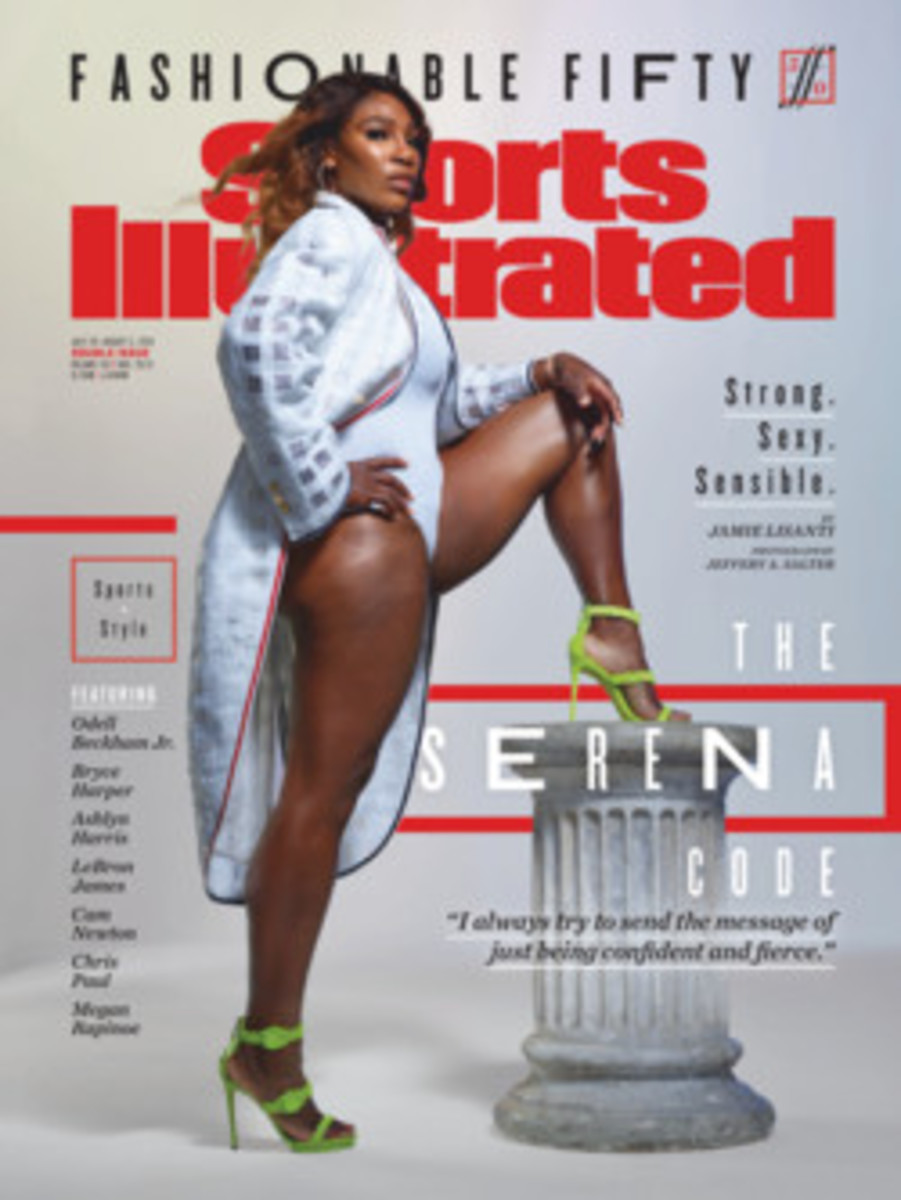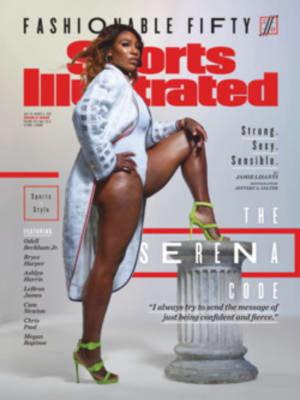
PROVING GROUND
More hits ... less down time ... robo umps. There are lots of ideas (some crazier than others) for how to improve the game—and now MLB has a laboratory to test them. On the surface, the ATLANTIC LEAGUE looks like an off-the-beaten-path independent minor league. Look closer and you might see the future of the game
THE OFFICIAL Baseball Rules do not begin with a foreword, or a table of contents, or a list of key figures. They begin with a record of their own history.
It takes nearly an entire page, listing the date of every rule-book amendment from the last seven decades. It shows the rules were updated in Chicago in 1956 and in Houston in 1964; they were amended in Louisville in 1992 and in Las Vegas in 2008 and by teleconference in 2017. A few of amendments have been revolutionary. Many have been the opposite: arcane tweaks in obscure passages, unnoticeable to anyone watching or playing or doing anything other than umpiring.
None were formally tested beforehand—installed in a playing environment outside of major or minor league baseball, observed in action and modified accordingly to achieve the desired outcome before being officially adopted.
Well, none yet.
In March, MLB announced a three-year agreement to test experimental rules and equipment at the top level of independent baseball: in the Atlantic League. Amid increasing discussion about all that might ail the game—too slow? too little offense? simply too boring?—baseball decided to try something new. It would develop a series of rule changes, test them on independent league players and study the results to determine which ones might be added to the majors. The program began in earnest in April with, for example, bigger bases, a three-batter minimum for pitchers and a ban on defensive shifts. It's only gotten more extreme in the months since. Now, the league is in the process of rolling out an automated strike zone and has instituted a more batter-friendly check-swing policy and even the ability to steal first base. (No, you did not misread that.)
To read the new rules is to see a potentially radical new vision of the game. But that's very different from what it is to see the rules in action or, more important, to play by them. The Southern Maryland Blue Crabs played in the Atlantic League's first game of the 2019 season, which meant they had the honor of being the first team to break a rule. Twice.
"It was funny—well, I don't know if funny is the right word," says general manager Courtney Knichel. "But, yes, we were the first team to break two rules."
For the first one, Southern Maryland got off with a warning. Early in the game, out of habit, the catcher began to head toward the starting pitcher for a chat on the mound. Not so fast. The umpire flagged him down before he'd gone too far. The Atlantic League no longer allows mound visits unless a pitcher is injured or being removed from the game.
For the second one, the Crabs had to pay. It looked like a routine play—fourth inning, an easy ground ball to the second baseman, standing in shallow rightfield, who lobbed it to first with plenty of time to spare. The runner was out. Or ... not. The umpires determined that the second baseman had violated the ban on defensive shifts by being that far into the outfield, so the runner was awarded first base.
Halfway through the season, both of these rules look a little different. For defensive positioning, the league has clarified that infielders can play deep in the hole without representing a "shift." As long as there are two fielders on either side of second base—even if they're no more than 10 feet into the outfield—it's legal. The mound-visit ban is still in place, but there's one exception: The battery can briefly meet to discuss signs, such as when a runner is on second and they need to switch to a different set to prevent sign stealing. (To make sure that they don't discuss anything else, the ump listens in.) And about those first base steals, a new creation for the second half: A batter may run to first on any count not "caught in flight" by the catcher, similar to a dropped third strike. "If you've got a below-the-Mendoza-Line type hitter, as a manager, you're hoping that the pitcher throws a wild pitch," Blue Crabs manager Stan Cliburn said in early July. "I'm telling my guy to take off." A week later, Cliburn became the first manager to watch one of his players do it.
These new rules are fairly representative of the whole experiment, requiring adjustments from everyone involved as the season goes on. Most are geared toward boosting the game's entertainment value—by cutting out dead time and increasing action—and most are minimally intrusive on the field, no matter how dramatic they seem on paper.
IN SOUTHERN Maryland's umpire locker room, two hours before first pitch, Tim Detwiler begins the process of preparing brand-new baseballs for game use. He's been umpiring for years here in the Atlantic League. But when he originally heard about the arrival of an automated strike zone—a "robo ump"—he wondered if it would be worth it to stay. He's long understood that umpiring is thankless by design; Detwiler's father worked as an ump, too, so he's been around the job his entire life. But this was something different.
"At first," Detwiler says, "I was like, Well, I'm not going back.... Why am I going back? Now you can put a monkey back there. What's the point?"
"I thought so, too!" Nate Caldwell, a fellow umpire sitting nearby, says.
"It was hard not to take it personal at first," Detwiler says.
"I don't take it personally," Caldwell says. "But, with the way it's going×"
TrackMan, the "robo ump" itself, is clearly visible way up behind the plate, a boxy black object that can be seen from almost anywhere in the stadium. The radar-based system has a three-dimensional strike zone calibrated for the size and stance of each hitter; the ball's location is recorded and nearly instantaneously transmitted to the plate umpire, who is equipped with earbuds and an iPhone. He'll hear a recorded voice say "strike" or "ball" in his ear, and he'll relay the call.
The system is being rolled out gradually. The Atlantic League has been trying to work out the kinks, which goes beyond simply ensuring that the technology is as precise as possible. For one thing, they've had to choose what the ump would hear: one beep for a strike, two for a ball? Words from a human voice or from a robot? (It's a male human voice, though the speaker's identity is secret; even the league's president doesn't know who it is.) They've had to decide if an ump would ever have the authority to override a robo-call. (Yes, in certain circumstances, such as when a curveball bounces in front of the plate and comes back up through the zone; TrackMan won't know any better than to say "strike," but the ump will be able to call it a ball.)
Now the system is here. It was first tested in a game situation in mid-May, and it had its official introduction at the league's All-Star Game in July, with plans to soon start using it every day for every team. Caldwell, who first umpired behind the plate with the system in June, was struck by how much he learned from it.
"I've seen myself work countless times on video," he says, "but I've never had what major league umpires have. I've never seen a plot or a score of my work. I think I'm pretty good, but I'd really like to know what's really there and what's really not. Now I'm getting instant feedback on whether it was a ball or a strike, versus what I thought." TrackMan, then, does bring something for the umpires to gain—alongside however much there is to lose.
"For 100 years, you go to a game, have beers, yell at the umpire when he makes a call against your team," says Detwiler. "My old man said, Who's going to yell at the computer?"
WAITING FOR the call to the big leagues is the central theme of the Atlantic League: Just about everyone is there because he's aiming for the opportunity to go somewhere else. It's true for players, umpires—hell, even the Blue Crabs' scorekeeper left a few years back for a promotion up the road with the Double A Bowie Baysox. (The new scorekeeper is the old team chaplain.) "Our backs are against the wall," says Cliburn, who's been in indy ball for most of the past decade. "We have to go show major league organizations that we still belong here. A lot of these guys have experience with that."
Like Blue Crabs outfielder Joe Benson, a former top prospect who made his major league debut in 2011 and has been trying to get back ever since: "We don't want these rule implementations to change how we're viewed as players, competitors, athletes," he says. "We don't want to be a circus act."
How much experimentation might be too much? This is clearest in a proposed change to move the mound back two feet, which was originally scheduled to take place after this year's All-Star Game but has since been pushed to be reconsidered for 2020. It would most likely increase offense, making it difficult for pitchers to get the movement that they're used to from 60 feet, six inches. But it could require dramatic change from other players. "None of these changes yet have been over-the-top," says 30-year-old Blue Crabs outfielder Cory Vaughn. "Now, if the mound was completely different? If you think about it, that's pitchers' release points, that's our timing as hitters—it would all be completely different."
Even if the mound isn't being moved yet, it's notable that it's been proposed in the first place. There's potential for baseball that's not just strategically different, but materially so, with physical ramifications for players. If there's a limit to the league's experimentation, it might go beyond literally changing the playing field.
THE GM of the Blue Crabs, like everyone else, watches the new rules with great interest on the field. But Knichel is also tasked with monitoring how they affect the situation off the field—fan engagement, players' morale, even the fact that the restrictions on time between innings means adjusting on-field entertainment. The Blue Crabs have seen an increase in attendance this year, to a nightly average of around 3,000, but it's difficult to tell how much of this, if any, can be attributed to the new rules. Most fans, Knichel figures, aren't concerned with these nuances, which isn't a bad thing. "The average fan is not a baseball purist," she says. "It's a family that wants to come out to a wholesome venue, watch fireworks, go home and put their kids to bed." In this sense, the changes are small; they're little tweaks around the margins of the game. But they're still tied to big questions: Can MLB engineer a more entertaining version of the game? Should it?
"One thing about baseball," says Caldwell, before he goes to work behind home plate—where he's now tasked with enforcing the ban on shifts, the limit on mound visits, the three-batter minimum for pitchers, the requirement to keep time between innings by yelling "20 more seconds" to a pitcher warming on the mound rather than "four pitches left," as the automated strike zone's radar system is positioned way above his head—"it's all about making adjustments. So, this? It's just another day in the life."
"For a hundred years, you go to a game, you have a couple beers and a hot dog, and you yell at the umpire when he makes a call against your team," says Detwiler. "WHO'S GOING TO YELL AT A COMPUTER?"

